Japan is an exciting country packed with things to do and places to see. In this article, we’re sharing all sorts of interesting facts about Japan. Plus advice and tips that’ll help you appreciate your time there even more!
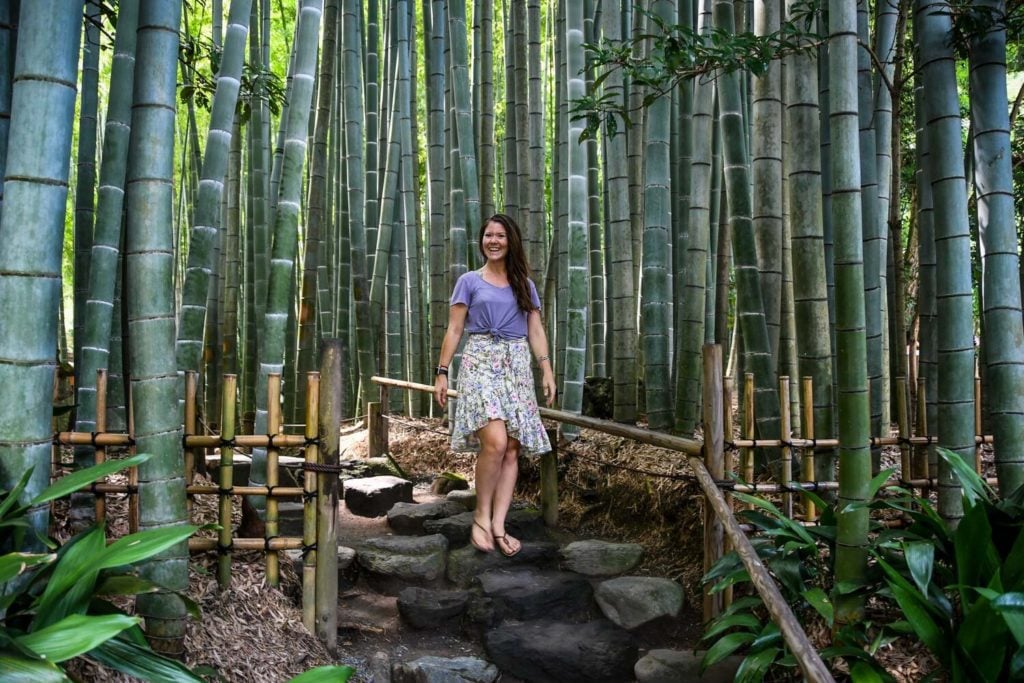
This is just for fun! Ever wonder where ramen comes from or how many islands actually make up Japan?
To help you celebrate the unique culture of Japan and appreciate your time there even more, we’ve rounded up some interesting facts about Japan.
You’ll definitely come away from this article with some new knowledge of Japan under your belt.
This article is broken down into different categories:
- Geographical facts about Japan
- Cultural facts about Japan
- Historical facts about Japan
- Quirky & fun facts about Japan
Read next: We’ve rounded up all the things Japan is most famous for in a guide that’s also packed with practical travel tips. Plus, we’re sharing a few things we personally think Japan should be famous for, but most foreign tourists are surprised to know.
Geographical facts about Japan
One of the largest island nations on Earth, Japan spans almost 146,000 square miles. It is Asia’s seventh largest country by land area, and the 11th most populated country in the world, with 126 million residents.
Even with its large population, the majority of the country is covered with mountains and dense forests. Keep reading for more geographical facts about Japan!
1. Japan is made up of more than 6,800 islands
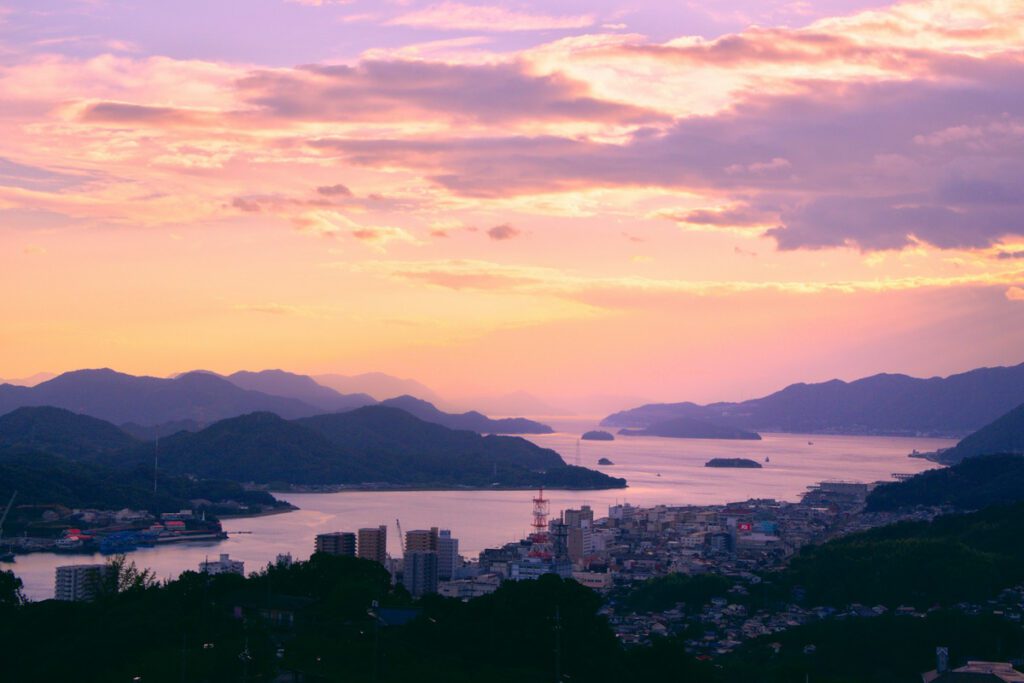
Crazy huh?! The archipelago of Japan is actually the 4th largest island nation in the world.
While many people know of Hokkaido, Japan’s northernmost island, and Honshu, the most populous island which is home to Tokyo and Osaka, many of the other islands are forgotten.
Though there are thousands of islands, only about 430 of them are populated.
Fun Fact: Being an island nation, scuba diving is actually really nice in Japan, but not a lot of tourists think of Japan as a diving destination. This means that dive sites are less crowded and marine life is in good shape! Check out our ultimate guide to diving in Japan for tips on where to go diving and how to plan your dive trip.
2. Tokyo is most populous city in the world
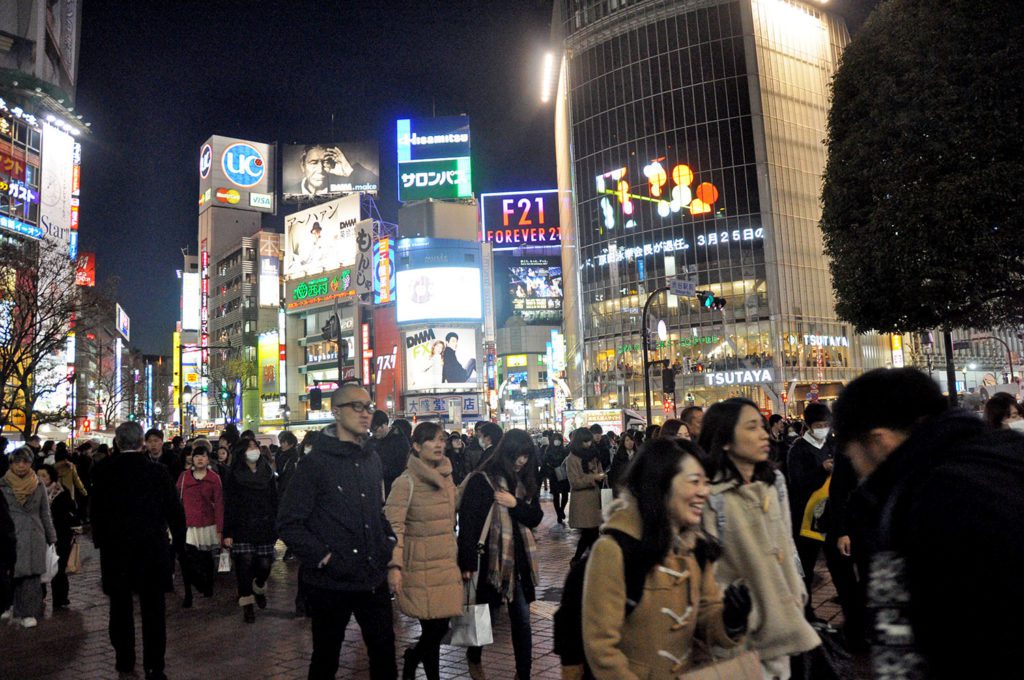
Tokyo is not only the most populous city in Japan, but also the entire world! With 13.9 million residents spread out among 5,194 square miles, you’ll find perpetually busy streets, shops, and restaurants.
What’s really wild is that the population of the entire Tokyo Metro area, including neighboring suburbs, is nearly three times the city itself — 37 million.
Comprising just 0.6% of Japan’s total land area, Tokyo Metro is home to nearly 30% of the country’s population!
It also has nearly 6 million more residents than the world’s second most populous city, Jakarta, Indonesia.
Don’t miss these articles if you’re planning trip to Tokyo:
- Best Things to Do in Tokyo, Japan + City Guide
- Tokyo at Night: Wild Things to Do After Dark
- Where to Stay in Tokyo: Neighborhood Guide + Best Hotels
- Best Time to Visit Tokyo: When to Go & When to Avoid
- Best Day Trips from Tokyo
3. Japan has 72 different “seasons”
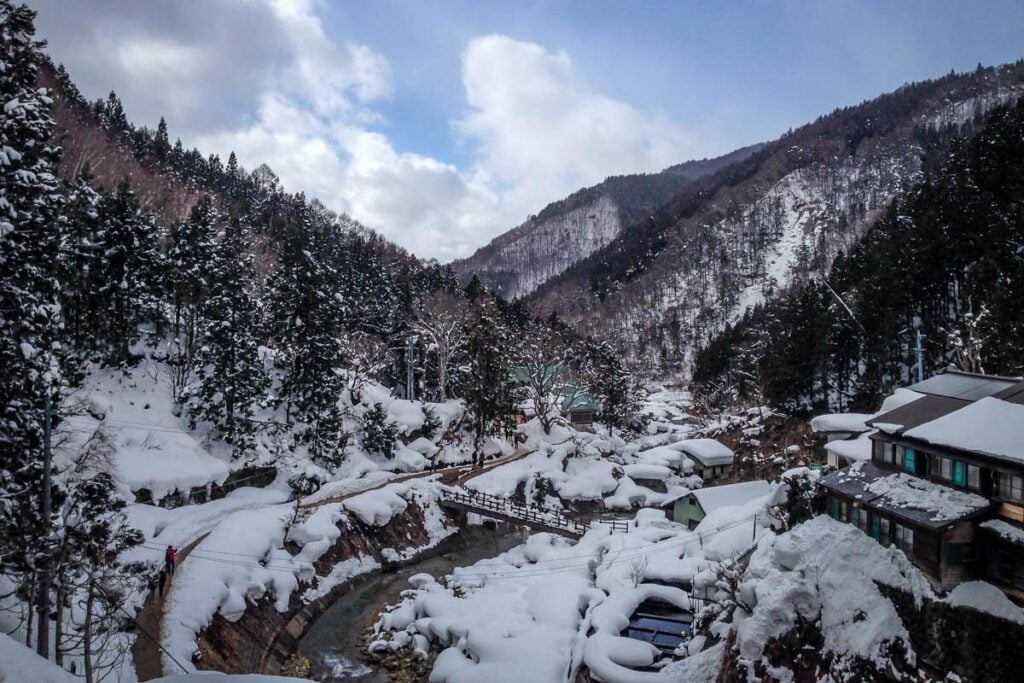
The traditional Japanese calendar was split up into 24 sections, and each of those were further divided into 3 subsections, creating 72 “micro seasons”.
These micro-seasons last 5 days, and the names of some of them are poetic:
- Frogs start singing (May 5th – 9th)
- Great rains sometimes fall (August 3rd – 7th)
- Dew glistens white on grass (September 8th – 12th)
- Insects hole up underground (September 28th – October 2nd)
- Maple leaves and ivy turn yellow (November 2nd – 6th)
While this isn’t necessarily something people go by in modern times, it’s a good reminder that the weather and atmosphere changes very often in Japan and it’s important to be prepared for it all.
Before booking your flight, be sure you actually understand what the weather in Japan will be like when you’re there. This country experiences the four common seasons, and the climate varies quite a bit from north to south.
- Winter: Temperatures can be mild to very cold, depending on where in the country you’re traveling. You’ll find snow in many parts of the country as well, though traveling to Japan in winter might just be a great idea!
- Spring: Comfortable temperatures and the famous cherry blossoms bring lots of travelers to Japan, making it one of the most crowded (yet beautiful!) times of the year.
- Summer: This season is hot (like really hot!) and humid, rain and typhoons can be expected.
- Autumn: Beautiful fall foliage and comfortable temperatures, early fall can see typhoons. We think autumn in Japan is the best time to visit!
Related: For an in-depth guide on the seasonal weather patterns and other factors, check out our complete guide on the best time to visit Japan.
4. There are still active volcanoes in Japan
Can you believe there are 440 volcanoes in Japan…and that 111 are still active?!
In order to be classified as “active,” a volcano has to have erupted at least once in the past 10,000 years. Four of Japan’s erupted as recently as 2023!
The country has the second highest concentration of active volcanoes in the world (behind only the United States!) and accounts for 10 percent of the world’s total volcanoes. In our opinion, that’s definitely one of the most interesting facts about Japan!
5. Japan is mostly mountainous and covered in forest
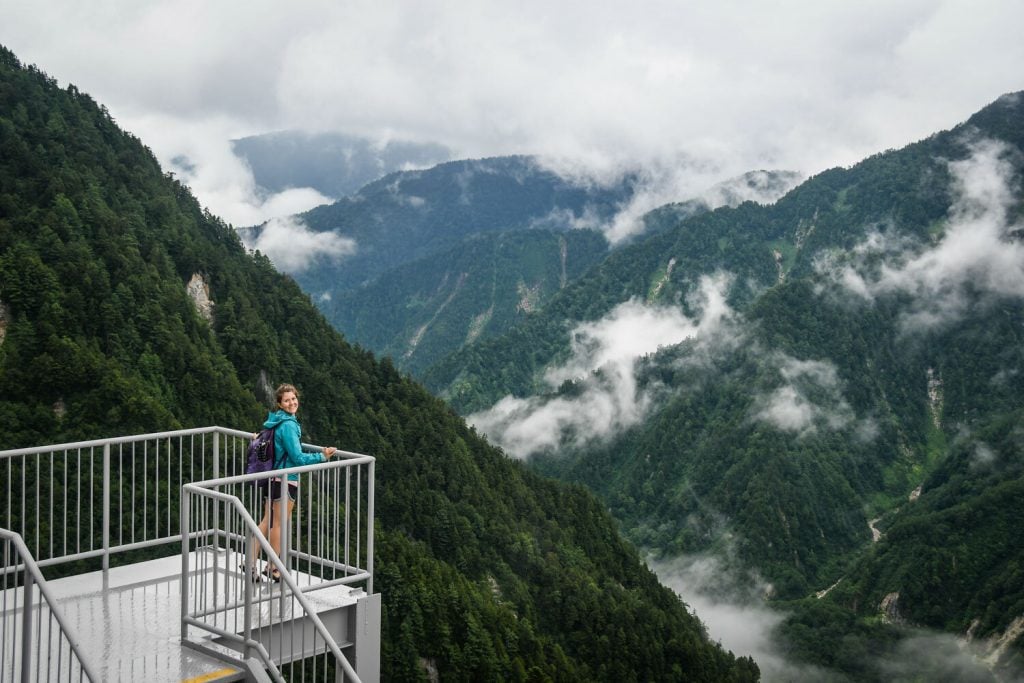
A whopping four-fifths, about 80%, of Japan is covered in mountains and forests. This creates jaw-droppingly beautiful scenery…and epic hiking!
There are countless amazing hikes to choose from in Japan, but arguably the most popular is the 14.3-kilometer (8-mile) Yoshida Trail on Mount Fuji.
Although it’s the most famous trail to the volcano, it isn’t easy. You’ll gain almost 1,524 meters (about 5,000 feet) in elevation!
For an even greater adventure, we highly recommend hiking the Kumano Kodo Trail. The pilgrimage trail through the mountainous Kii Peninsula takes you through small villages, picturesque farmsteads, historic shrines, and giant cedar forests.
6. Japan has excellent skiing
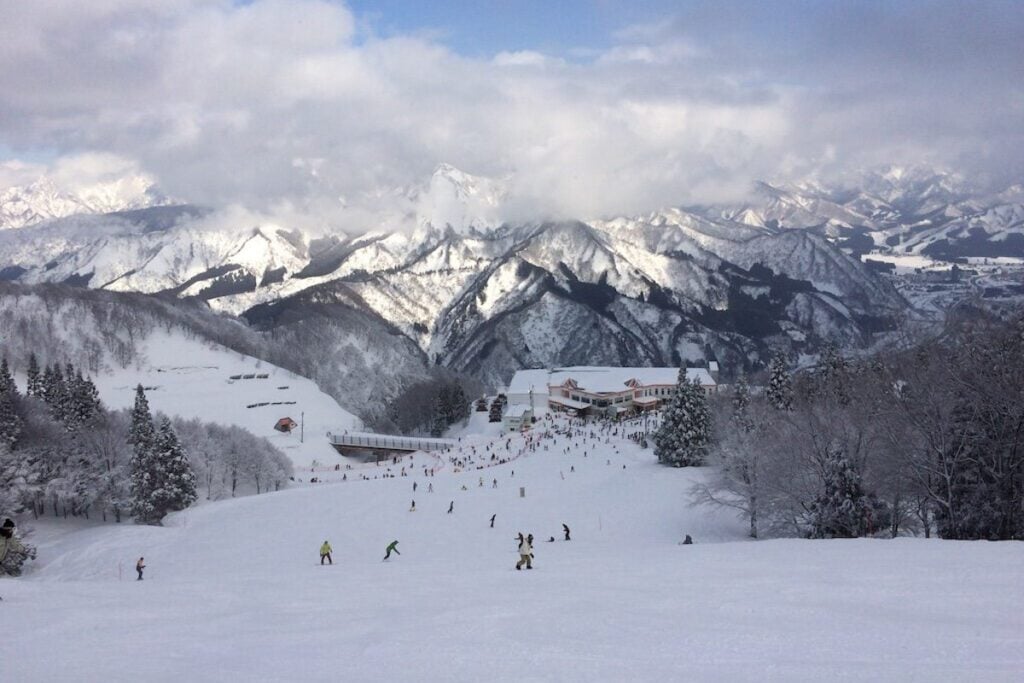
Who knew?! Well, I suppose a lot of people, but I was not one of them.
Ben and I snowboard and even spent a winter season working at a ski resort, so we love some good powder. And as it turns out, Japan has some of the best in the world!
If you’re a snow bunny, you might want to plan your trip to Japan during the winter months so you can enjoy world-class skiing!
7. Japan has the world’s sixth longest coastline
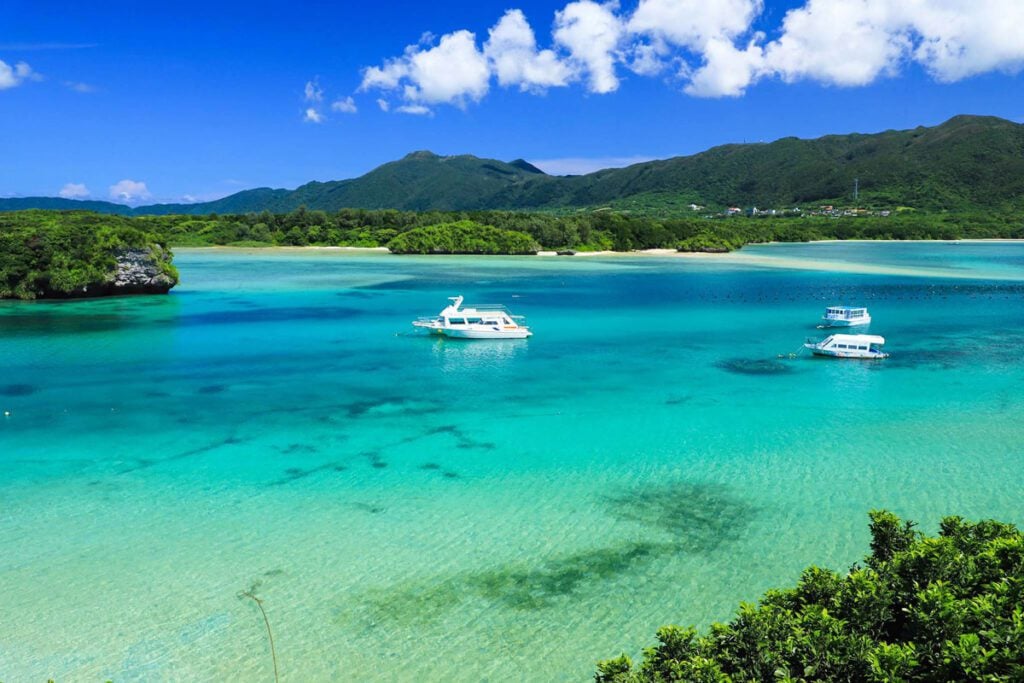
In addition to its soaring mountains and dense forests, Japan is also home to the sixth longest coastline in the world — nearly 30,000 kilometers (over 18,600 miles!).
If you’re puzzled trying to figure out how that’s possible, consider this: Japan has a staggering 14,125 islands! Even though the vast majority of them are tiny, that adds up quickly!
Divers, snorkelers, and other water enthusiasts will love visiting, because you’re never more than 150 kilometers (just 93 miles!) from the sea!
Fun facts about Japanese culture
We were fascinated (still are!) with this country’s vibrant culture and meaningful traditions. The next several facts about Japan will help you understand the culture before visiting — and doing so is actually one of our most valuable Japan travel tips!
Psst! Looking for more tips? We have a whole article filled with expert tips for traveling in Japan!
8. The main religion in Japan is Shinto
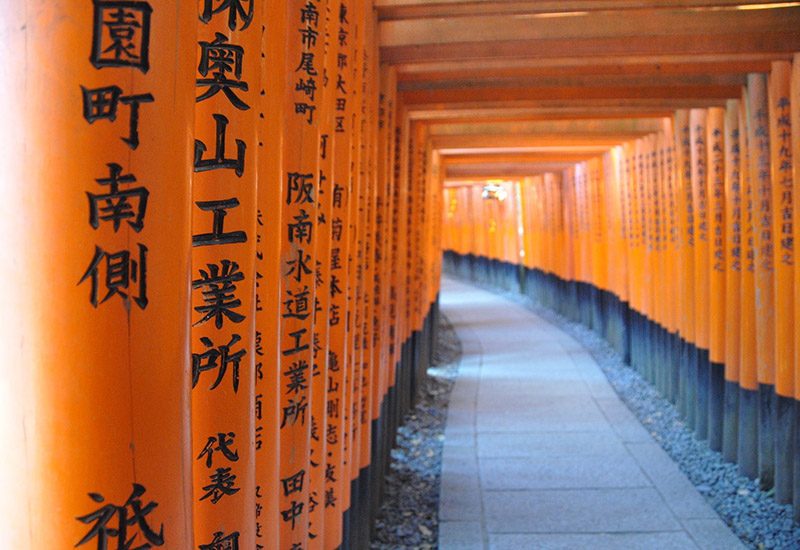
You’ll likely see hundreds of shrines while exploring Japan. They’re in the cities, in rural areas, even in tiny mountain villages!
These shrines, or jinjas, are important to the Shinto religion, for prayer and sacred rituals.
Roughly 69% of Japanese people practice Shinto, a religion rooted in the belief that there are kami, guardians or protecting deities. There is not just one kami, but hundreds, all with varying degrees of powers.
9. Japan has 3 writing systems
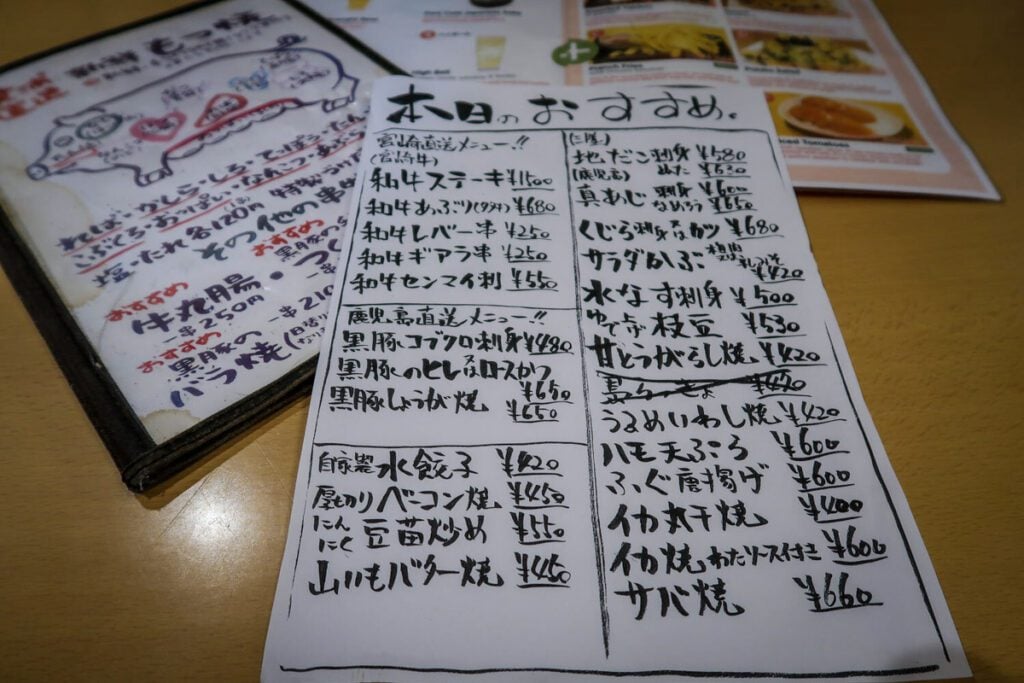
While visiting Japan, you may notice many (many!) different symbols. It can be a bit overwhelming at first, as Japan has three unique writing systems: Kanji, Hiragana, and Katakana.
If you’re hoping to get a head start on the language before visiting, start with the Hiragana system. This gives you a basic understanding of pronunciations in the Japanese language (it’s also one of the best tips for traveling in Japan!).
After mastering the Hiragana system, start studying the closely related Katakana system. Finally, move onto the Kanji system, as it’s the most challenging.
10 Japan uses a different calendar than the western world
Throughout time, Japan has used numerous calendars. In 1873, the country adopted a variation of the Gregorian calendar and before that, it used a lunisolar system for almost 1,200 years.
Although the modern-day calendar is similar to those of the western world, there are some distinct differences.
Japan uses an era name system associated with each emperor. It is currently the Reiwa 5 era, which means it’s the fifth year since a new emperor’s reign began.
Other calendar differences include a strong emphasis on zodiacal animals in the 12-year cycle. Japan also still uses traditional names for each month.
11. There is a difference between a Yukata and a Kimono
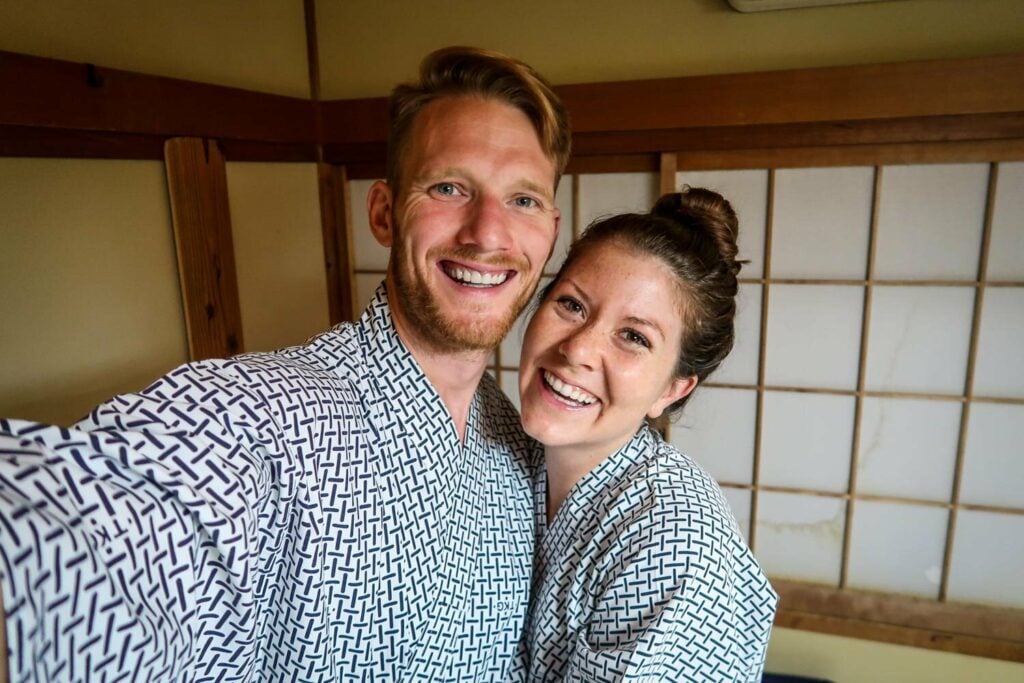
There are a few distinct differences when it comes to fabric, occasion and season.
Yukata is commonly made out of cotton and typically only have one collar, making them a lighter attire. Kimono are usually made of silk and have two collars, making them warmer and heavier.
Yukata and kimono are worn for different occasions. Kimono is the more formal attire and is worn for weddings and graduations. Yakata is less formal and is usually worn around the house or outside during the hot summer months.
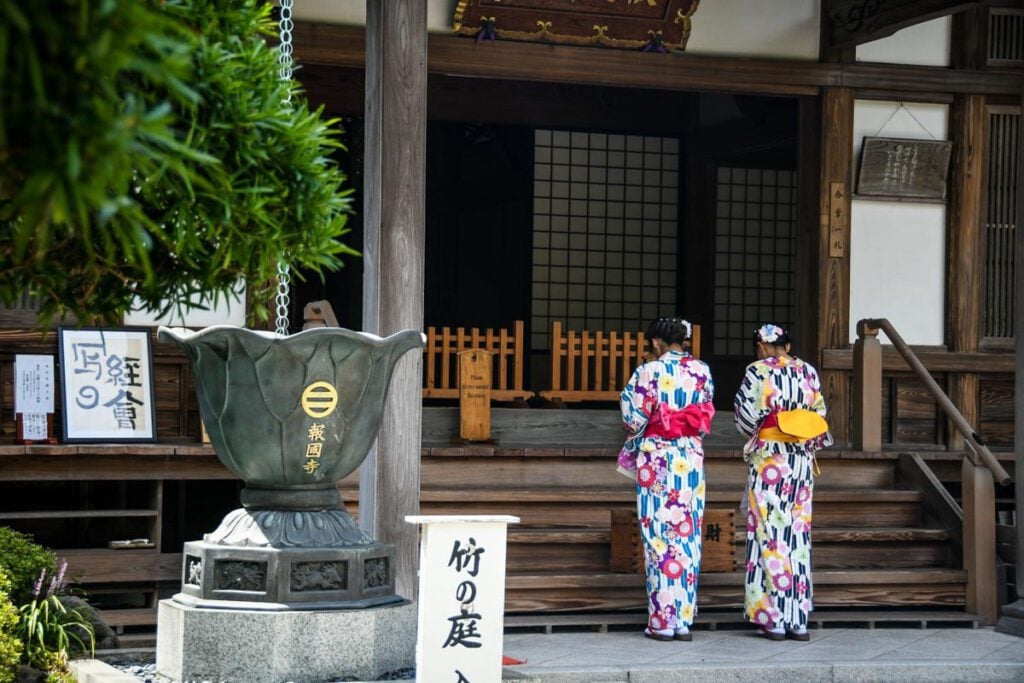
Guesthouses in Japan typically have a yukata in your room for you to wear around the building. If you would like to rent a kimono for the day, you can find fitters in most cities.
Important to know: Whether you’re wearing a kimono or a yukata, it’s important to know one thing — the left lapel must be worn over the right. This is because deceased people are dressed in a kimono with the right side over left for funeral ceremonies.
12. Many Japanese people sleep on the floor
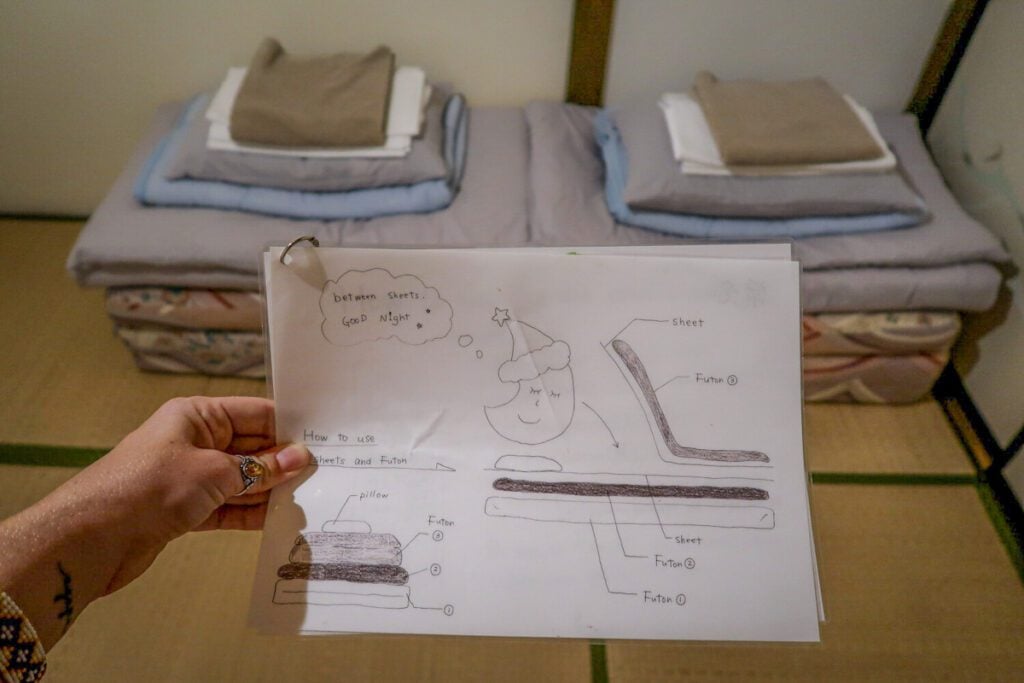
Traditionally, Japanese people don’t sleep on beds, as is common in the West. Instead, they sleep on futons.
No, this is not the same kind of futon (a.k.a. couch that turns into a bed) you used for sleepovers in your parent’s basement growing up…
Japanese futons are essentially a very thick blanket that serves as a mattress, paired with a duvet blanket and a pillow. All three items can be folded up and stored in the closet to save valuable space during the daytime.
If you plan to stay in a ryokan or smaller guesthouse in Japan, you should expect to sleep on a futon. Typically more modern hotels will have Western-style beds.
Good to know: Traditional Japanese pillows are stuffed with beans, and you may encounter these a few times on your travels in Japan. They are much more stiff and lumpy than pillows you may be used to, so if you’re worried about it, you may want to pack a travel pillow.
13. Some famous Japanese dishes come from a time of poverty
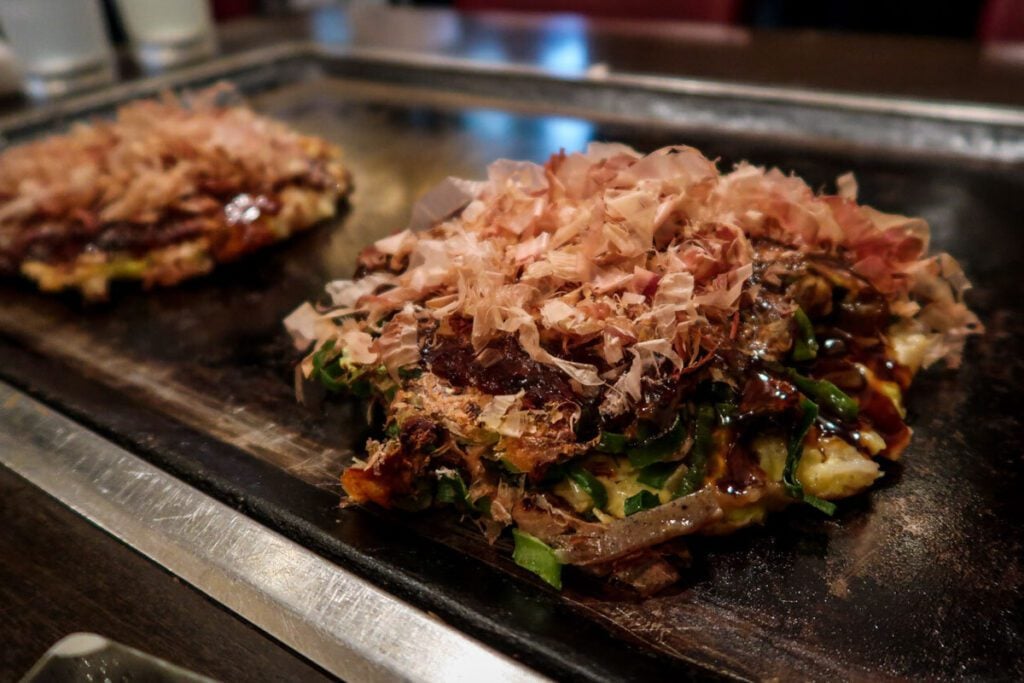
Food shortages after World War II meant rice was scarce. U.S. entities brought in wheat flour, which led to the creation of fried dishes such as kushikatsu, karaage, okonomiyaki, and takoyaki.
Ramen was also increasingly popular during this time. This was a cheap way for people to fill up even during times of food shortage.
Read more about foods in Japan in our guide to Japanese cuisine.
14. There’s a market for “luxury food”
This might sound ridiculous, but there is a trend of luxury food in Japan, and wealthy people pay big dollars for rare items like square watermelon and specialty grapes and cantaloupe, some of these bringing in tens of thousands of dollars!
So what do people do with these so-called “luxury foods”? Well, they typically don’t even eat it themselves, but instead give it as a gift.
Umm, I’d prefer a plane ticket, thank you very much!
15. Japan consumes more fish than any other country
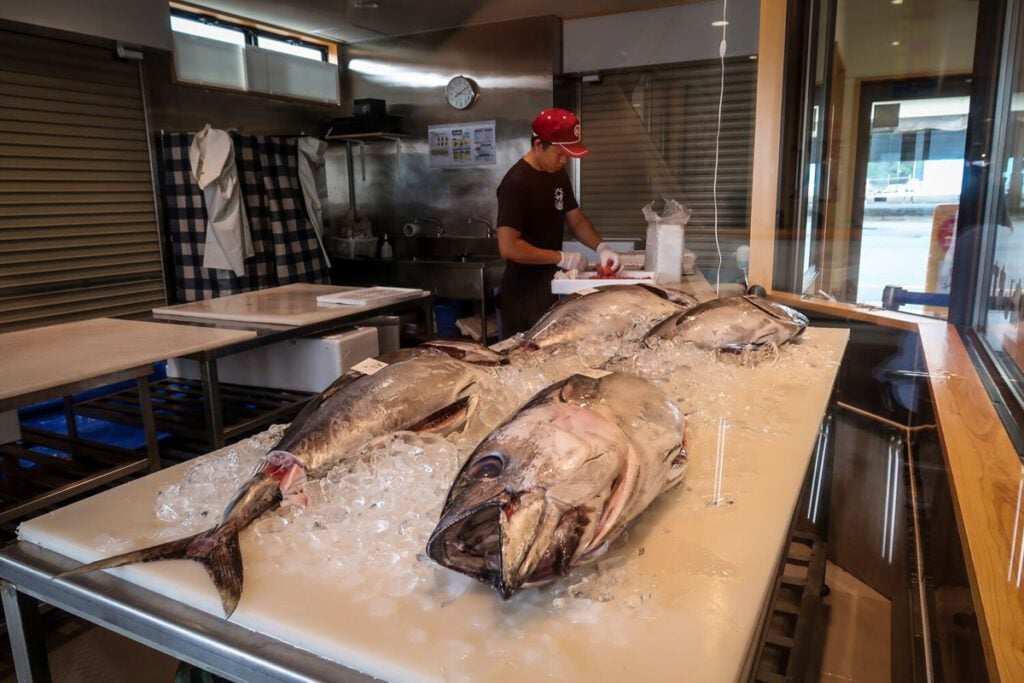
In fact, 7.5 billion tons of fish are eaten per year, which is nearly 10 percent of the fish caught in the entire world.
16. Ramen and Sushi are NOT originally Japanese
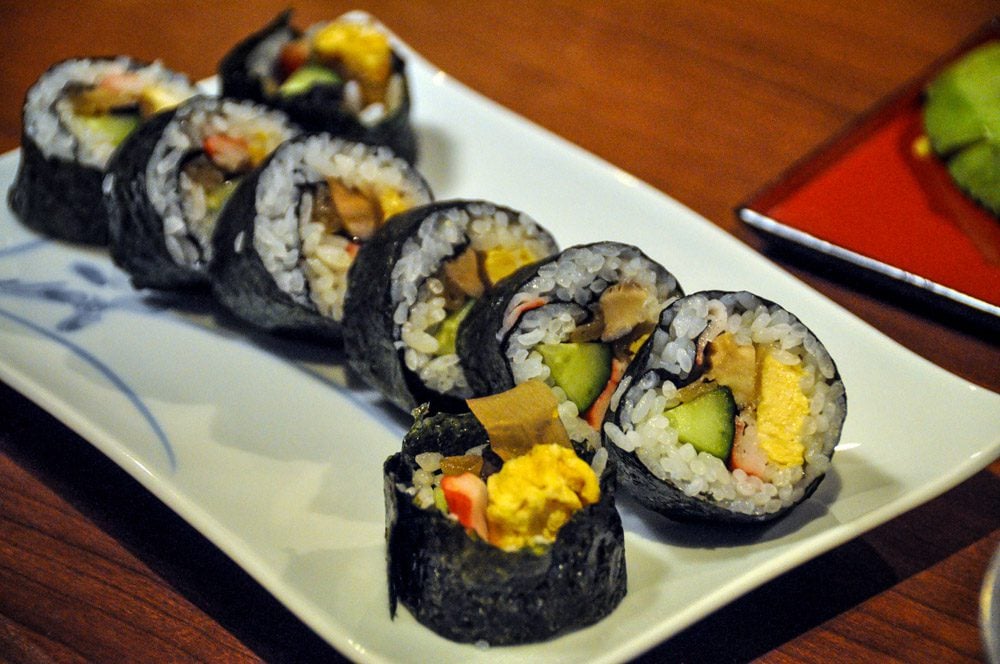
Now before I start any wars with that statement, let me clarify by saying that ramen and sushi, as we think of them today, are totally Japanese. However, many people may be surprised to know that these famous dishes actually came from other countries.
Ramen came from Chinese settlers and sushi was an invention of working-class people in Southeast Asia as a way to keep fish fresh for longer.
Over time, Japanese people have put their own flavors and spin on these dishes to make them uniquely their own. But it is important to recognize that the concept came from elsewhere.
Sushi and ramen are just two examples — many other dishes that we think of as “Japanese” came from other regions as well.
17. Sumo Wrestling is a Japanese tradition
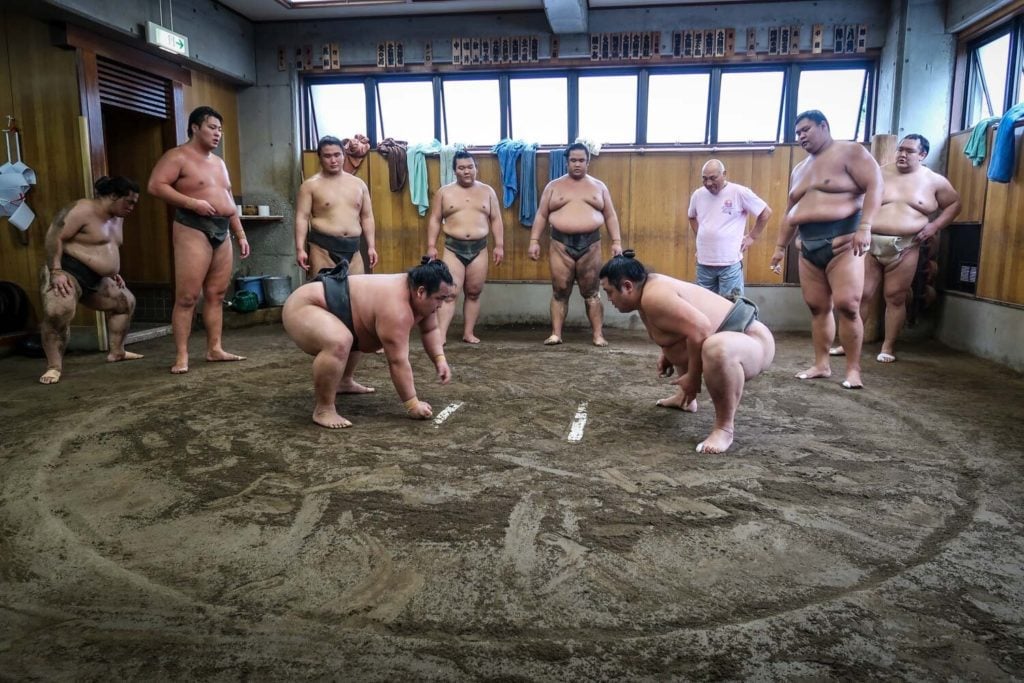
Sumo wrestling has origins dating back over 1500 years and is connected to the Shinto religion. Wrestlers, also known as rikishi, are required to live together in a communal training stable. They practice everyday and live a very traditional lifestyle.
While sumo is of Japanese origin, many sumo wrestlers are not from Japan. Some of the highest ranking rikishi are from Mongolia, Georgia and Bulgaria.
18. White collar workers are called Salarymen
Go to any city train station around rush hour and you’ll quickly notice a sea of men dressed in essentially the same thing — drab black dress pants and white button-down shirts (pale blue if they’re feeling spicy!) and a jacket in the colder months.
Salarymen is the term used to describe white collar workers. In Japan, it’s very common for young men (and women) to get a job out of university and stick with that company throughout their entire career.
Another characteristic of salarymen is that they work long hours. In some Asian cultures, putting in long hours is seen as showing loyalty and productivity.
There is often pressure to go out drinking after work hours, making it a difficult work-life balance for many salarymen. This has come into scrutiny in recent years, as high rates of suicide or health issues have come into the public eye.
19. The first geisha in Japan were men
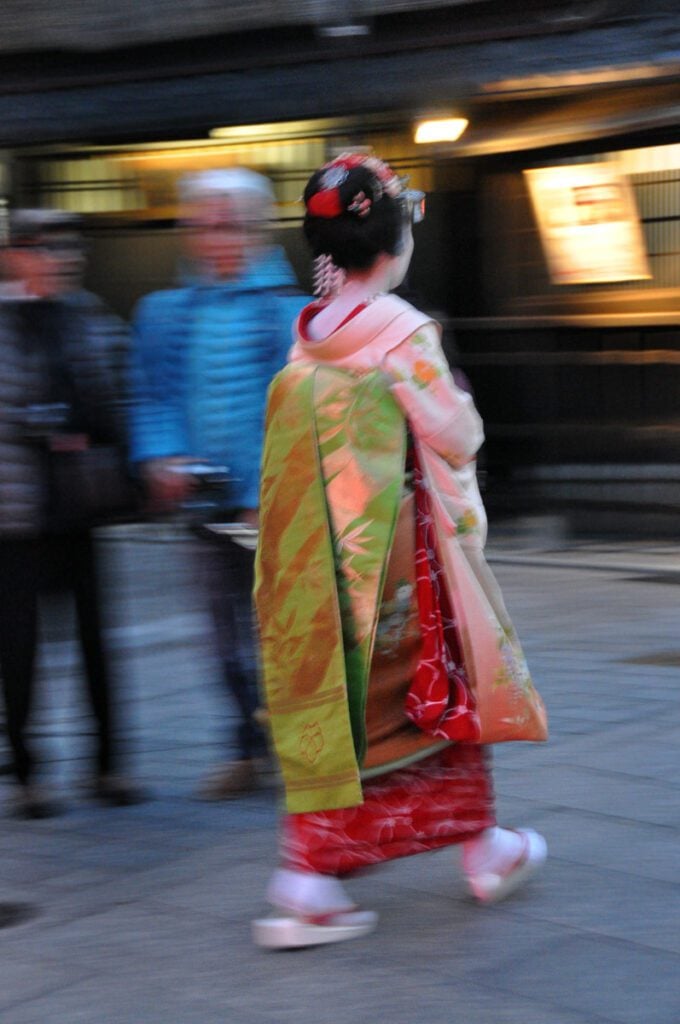
You’ve no doubt seen pictures, movies, or festivals where Japanese women are dressed in beautiful kimonos and elaborate makeup. These are usually geisha, live performance artists whose job is to entertain guests at tea houses or social events.
One of the most interesting facts about Japan is that the country’s first geisha were actually men! They first appeared around the year 1730, whereas female geisha didn’t begin to appear for another 20 years.
While their roles have definitely evolved with time, today there are still working geisha in Japan.
20. Mount Fuji is a volcano and a holy site
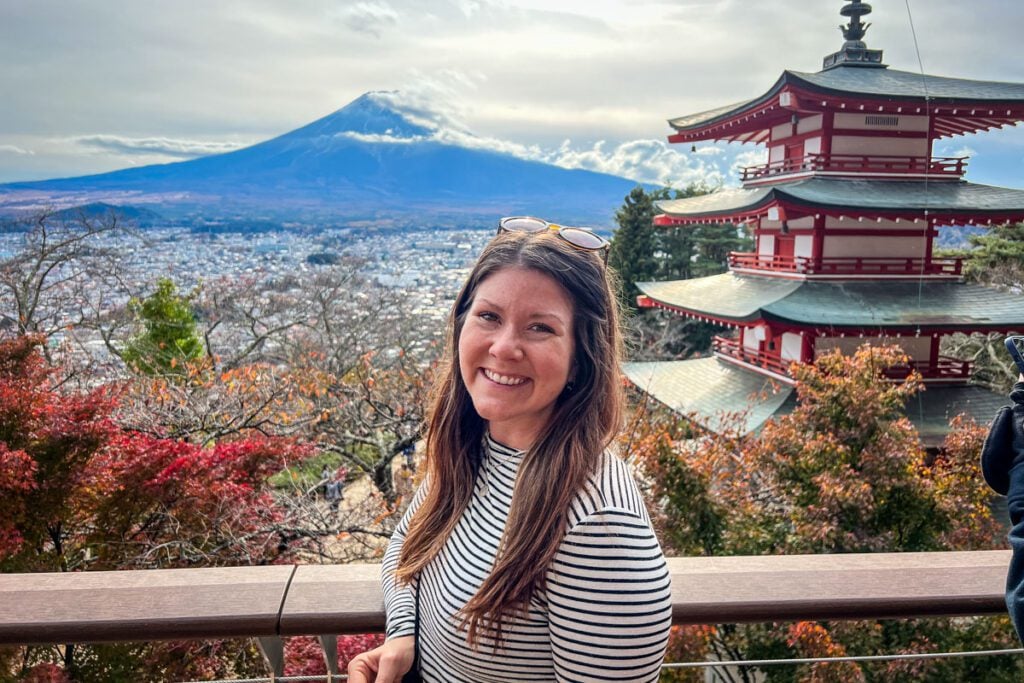
Remember earlier, we mentioned there are 440 volcanoes in Japan? Well, you’ve likely seen pictures of, or at least heard of, the most famous: Mount Fuji.
It’s the tallest mountain in Japan, soaring to over 3,760 meters (12,335 feet). In addition to being wildly popular for hiking and photography, it’s also one of Japan’s three sacred mountains. The other two are Mount Haku and Mount Tateyama.
Both major religions in Japan (Shinto and Buddhism) worship the natural symbol of Mount Fuji as a god, whereas its volcanic activity symbolizes earth, sky, and fire.
For more mind-blowing facts about Japan’s most famous mountain, check out our Mount Fuji day trip guide!
Psst! We have a list of must-see landmarks in Japan that’s sure to give you some inspiration for your itinerary!
Historical facts about Japan
In addition to its rich culture and beautiful landscapes, there are so many interesting historical facts about Japan. Read on to better understand the country’s past and the way it has shaped its present.
21. Japan is nicknamed the “Land of the Rising Sun”
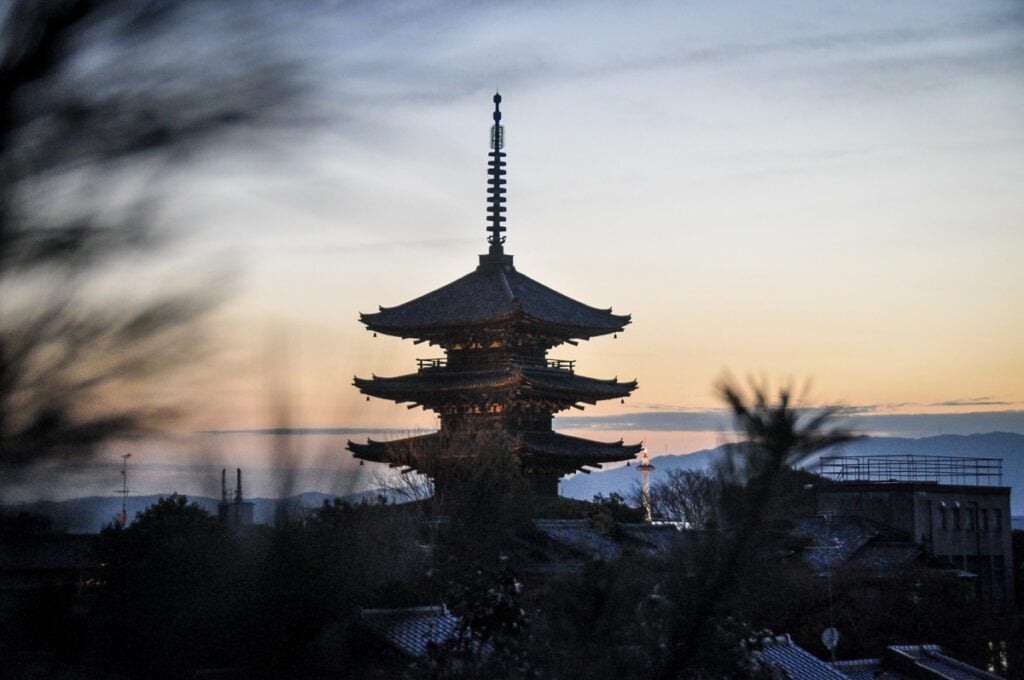
Japanese people call their country “Nippon” or “Nihon,” which literally translates to “origin of the sun” in English. As a result, Japan is widely known as the “Land of the Rising Sun.”
However, Japan is not the first country to see the sun rise — that honor belongs to Kiribati, a tiny island nation northeast of New Zealand.
So how did Japan get its nickname? History suggests that it came about in ancient communications between the Japanese and Chinese governments. From China, Japan appears to be the place where the sun rises, or originates.
22. Japan is ruled by the last Emperor in the world
The current Emperor of Japan, who also happens to be the last remaining emperor in the entire world, is Naruhito. Following his father’s footsteps, he took the throne in May of 2019, beginning the Reiwa era. Naruhito is Japan’s 126th monarch.
One of the most interesting facts about Japan is that today, the emperor does not have political functions (i.e.; political power).
Instead, his role is strictly symbolic, limited to “important ceremonial functions,” as stipulated by the Japanese constitution.
23. The oldest company in the world was formed in Japan
Construction company Kongo Gumi was founded in Japan in 578 AD. Yep, you read that right…year 578!
It remained a family-run business for over 1,400 years, but in 2016, Kongo Gumi ran into some financial trouble and had to merge with a larger company. The company is still headquartered in Osaka today, and it specializes in building Buddhist temples.
24. Smallpox killed ⅓ of Japan’s population
This isn’t one of the more fun facts about Japan, but it is an important part of the country’s history.
A tragic smallpox epidemic fell over Japan in the year 735, killing more than one million people. In less than three years, over one-third of the country’s population perished.
It is believed a Japanese fisherman brought smallpox to the country when he returned home after being stranded in Korea.
The epidemic also devastated Japan’s economy. Farmers and landowners couldn’t care for their crops, so crop yield steadily declined and ultimately caused a famine, a type of epidemic in its own right.
25. Japan went through a period of isolationism for 265 years
Due to the threat of outside colonial and religious influences upsetting the peace in Japan, the country severely limited trade from 1639 to 1853. Nearly all foreign nationals were also banned from entering Japan.
265 years is a LONG time to be isolated from the rest of the world!
This foreign policy, and the associated period of time, is called Sakoku. Japan’s social hierarchy was established during this time and, interestingly, so were many of its most famous and beloved traditions. This includes haiku, bonsai trees, and tea ceremonies.
Quirky and fun facts about Japan
We’ve learned about the cultural, geographical, and historical facts about Japan, now it’s onto some fun ones!
26. Japan has one of the longest life expectancies in the world
At an average of 84.62 years, Japan has the second longest life expectancy in the entire world!
This can be attributed to several factors, but it’s largely due to Japan’s low obesity levels. Japanese people eat a healthy diet overall, with less red meat and processed food and more fish and plant foods. This leads to fewer deaths due to things like heart disease and cancer.
27. Japanese scientists invented ice cream that doesn’t melt
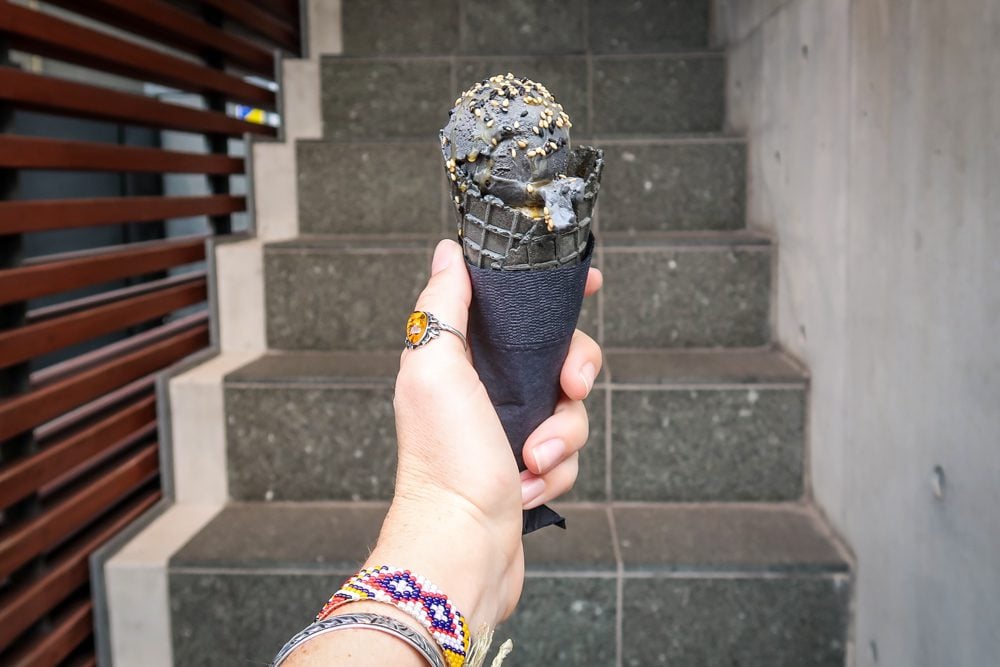
What’s better than a cold, refreshing ice cream cone on a hot day? One that doesn’t melt, of course!
Researchers at Japan’s Kanazawa University developed an ice cream recipe that maintains its shape and doesn’t melt for up to three hours (at room temp). This is especially “cool” during the hot and humid summer days in Japan!
28. Japan is home to the deepest underwater post box
Susami Bay, a fishing town in Japan, is home to the deepest underwater post box…which is exactly what it sounds like — an underwater mailbox!
The post box is 10 meters (about 33 feet) underwater, but that’s not the most impressive thing here. It actually receives over 1,000 pieces of mail every year!
If you’re hoping to send some sea mail yourself, you’ll need to buy water-resistant postcards and an oil-based paint marker to write on them. Oh, and you’ll need to don a wetsuit and dive down to the mailbox, too!
29. Japan has the highest density of vending machines in the world
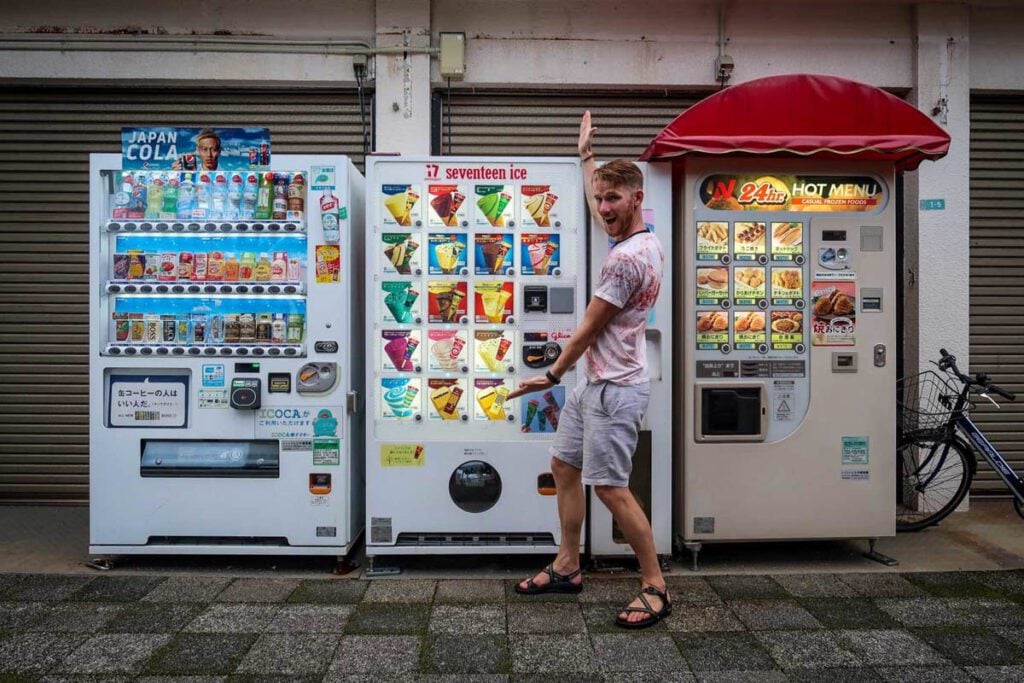
You’ll see vending machines EVERYWHERE. We even bought an iced coffee from a vending machine on a street corner in very remote towns on our Kumano Kodo trek, where the population couldn’t have been more than a couple hundred people.
And in the big cities, like Tokyo and Osaka, you’ll find vending machines on just about every city block, selling anything from the ordinary — sports drinks, coffees and snacks — to the unusual — electronics, small toys, and DVDs.
There are even rumors of used underwear vending machines… we never saw them (or even looked for them!), but there’s no doubt you’ll see quite the variety of vending machines in Japan.
Interesting to know: One Japanese man explained to us that seeing all the vending machines is proof that Japan is very safe. If it were unsafe, there’s a good chance they’d be broken into.
30. You can find square watermelons in Japan
Non-melting ice cream, underwater post boxes, AND square watermelons?! One of the most interesting facts about Japan is that life here is definitely unique!
Although the square fruit is edible, it’s grown this way more for symbolism than taste.
You may see these novelties at festivals or in department stores or lobbies, as square watermelons symbolize energy, gratefulness, and collaboration during the hot summer months.
And if you do want to purchase one, they come at a hefty price. Purchasing a square watermelon will set you back more than 10,000 yen (or about $200 USD)!
31. The majority of adoptions in Japan are of grown men
It’s probably safe to assume that when most people think of adoption, they don’t think of grown men.
However, the practice of adopting grown men in Japan is more of a technicality. Civil code requires that family wealth be passed down through males of a family.
But if a father doesn’t have any male sons, parents usually adopt a son whom they can trust to carry on the family name and run the family business.
Today, this goes hand-in-hand with arranged marriages. The adopted son often marries the daughter and takes the family name…making him the son AND son-in-law!
32. Japan has an obsession with all things CUTE
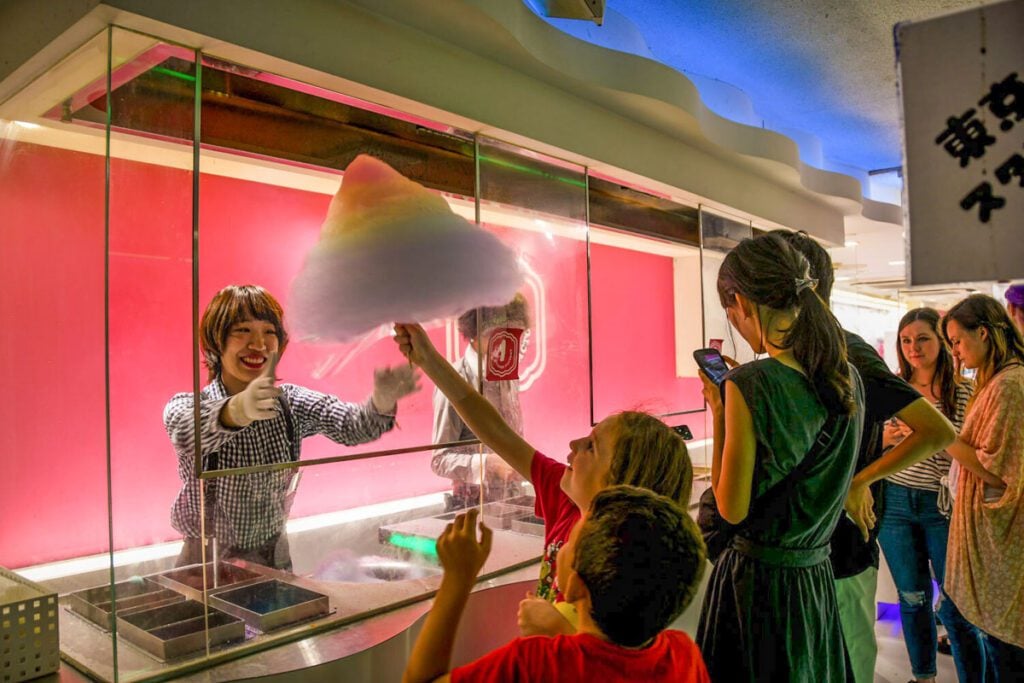
Kawaii is Japanese for “cute,” and there is an entire culture built around this concept.
- Purikura: One way to partake in the kawaii culture is to hop inside a Japanese photo booth, or purikura. You will have the chance to cute-i-fy your picture by adding fun backgrounds, makeup, and stickers. Oh, and expect your eyes to be enlarged, your skin to look flawless, and your jawline shrunk so you look extra “CUTE”.
- Harajuku: This neighborhood in Tokyo is the epicenter of all things kawaii. You’ll see rainbow-themed foods, costumes, and super cutesy fashion. Definitely an interesting place to check out while in Tokyo.
- Theme cafes: There are all sorts of theme cafes, embodying the kawaii culture in Japan. Remember, you’re not going for the food, but rather, for the experience.
33. There is a “Rabbit Island” in Japan

Set in the Inland Sea amidst Japan’s expansive archipelago is the enchanting Okunoshima Island, locally known as “Rabbit Island.” Despite its haunting past as a testing ground for chemical weapons during World War II, the island has metamorphosed into a haven for an adorable, big-eared population.
Following the war, test subjects purportedly roamed freely, leading to an explosion in numbers within this predator-free haven where dogs and cats are strictly prohibited.
Plan your trip to Japan
After 3 trips (and counting!), we’ve fallen head over heels for Japan—and we’ve created TONS of resources to help you plan your dream trip. Start with our Ultimate Japan Travel Guide and be sure to check out these helpful articles:
- First time? Our Japan Trip Planner walks you through everything you need to know.
- Use our Japan Rail Pass guide to determine if getting a train pass is optimal for your trip.
- Here’s our curated list of the best things to do in Japan—from iconic sights to once-in-a-lifetime experiences.
- Not sure where to go? Our Japan itinerary ideas will help you map it all out.
- Foodies, rejoice! This guide to what to eat in Japan will have you drooling before you land.
- This guide to what to wear in Japan (and what not to wear) will help you blend in.
- Use our ultimate Japan Packing List to make sure you don’t forget anything.
- Before you go, brush up on these essential Japan travel tips (including major do’s and don’ts!).
- Avoid awkward moments by brushing up on Japanese etiquette.
Still have questions? Drop us a comment—we LOVE helping travelers plan unforgettable trips to Japan!
Perfect Japan itinerary
Want the perfect itinerary planned for you?

If you don’t have a ton of time to spend planning your Japan itinerary (or you just don’t find travel planning fun), we’ve got something you might be interested in…
We created the ultimate done-for-you Japan itinerary that is packed full of all sorts of tips we’ve gathered from 3 trips to Japan as well as literally hundreds of hours of research (no exaggeration).
We have both an off-the-beaten path route as well as a classic itinerary that hits the top attractions (perfect for your first visit to Japan!).
Don’t miss your chance to grab our Japan packing list!
This FREE PDF download includes everything you’re going to want to pack for your Japan trip, including what NOT to bring, plus tons of insider tips!
Just enter your email and we’ll immediately send you access instructions!
Save this article to Pinterest for later!
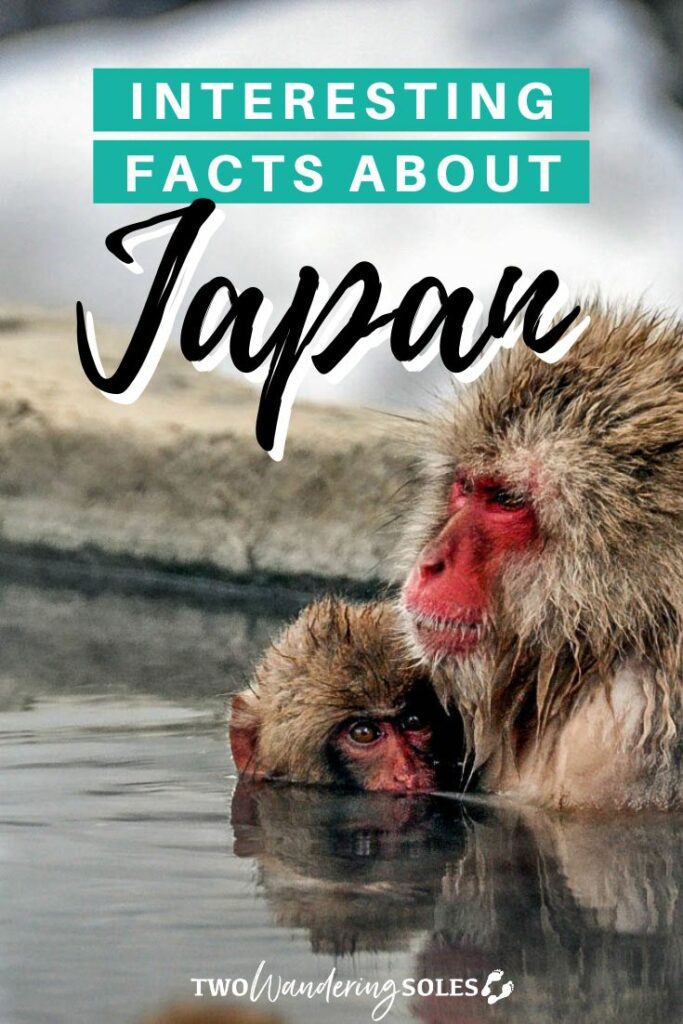
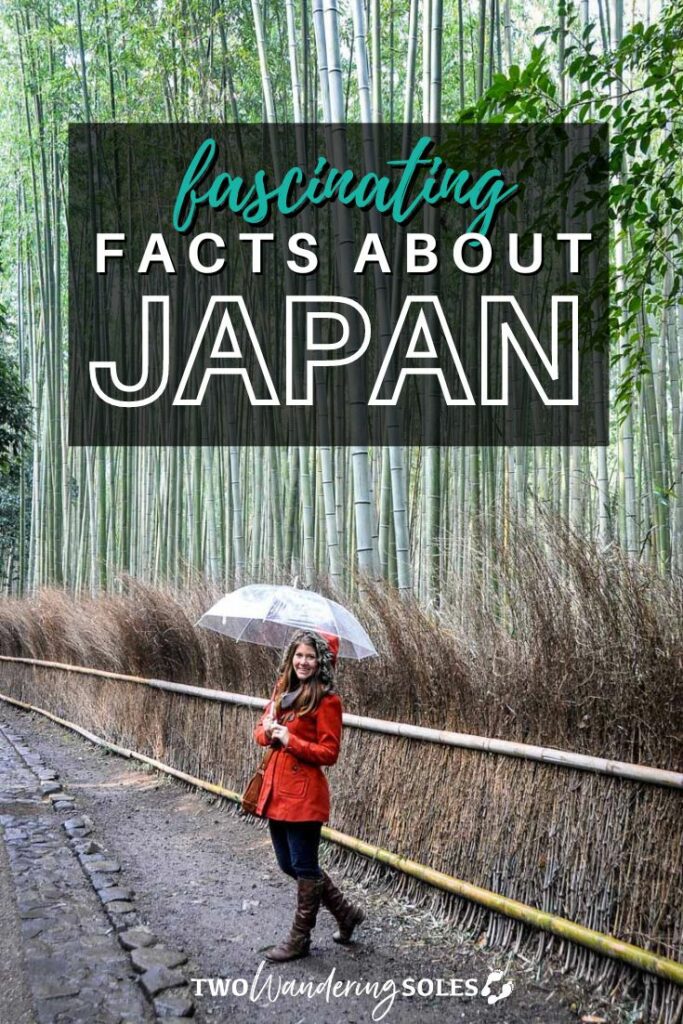
We want to hear from you!
Do you have any more interesting facts about Japan? Which of these facts about Japan surprised you the most? Let us know in the comments below!

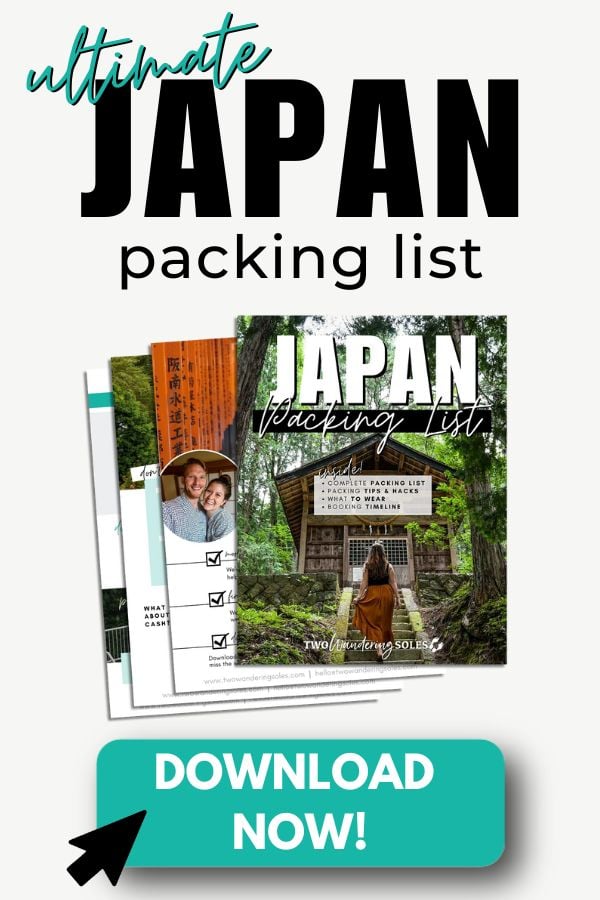
Hi! Thank you so much for your wonderful articles! We have been learning a lot from you. Would you please help me. We are traveling to Japan in Jan 2024 and going to stay for two weeks between Tokyo and Kyoto and hopefully everywhere in between.. my 25-year-old son is an excellent golfer … I have been scouring the Internet for the past six weeks and cannot find a website that will 100% let me book a tee-time. Maybe because of the language or I cannot find which ones will be open. Are you able to send me any information that I can definitely book as I know golfing, you need to do that far in advance .. and that way, I can also book our accommodations around the golf course. He was truly hoping to golf around the base of Mount Fuji somewhere.. thank you in advance for all your effort😁😁😁